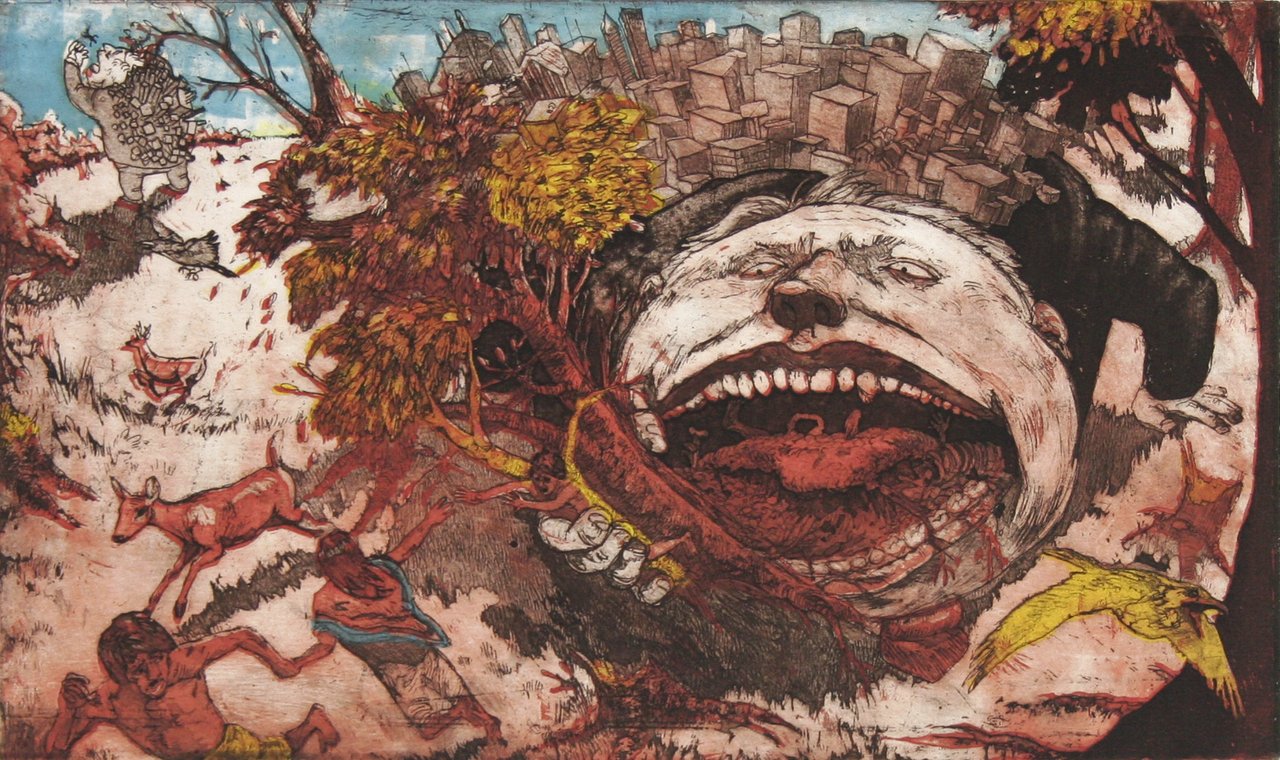Excerpted from the book Deep Green Resistance — Chapter 15: Our Best Hope by Lierre Keith.
Fairy Tales are more than true; not because they tell us that dragons exist, but because they tell us that dragons can be beaten.
—G. K. Chesterton
The IRA had Sinn Fein. The abolition movement had the Underground Railroad, Nat Turner and John Brown, and Bloody Kansas. The suffragists had organizations that lobbied and educated, and then the militant WSPU that burned down train stations and blew up golf courses. The original American patriots had printers and farmers and weavers of homespun domestic cloth, and also Sons of Liberty who were willing to bodily shut down the court system. The civil rights movement had the redefinition of blackness in the Harlem Renaissance and the stability, dignity, and community spirit of the Pullman porters, and then four college students willing to sit down at a lunch counter and face the angry mob. The examples are everywhere across history. A radical movement grows from a culture of resistance, like a seed from soil. And just like soils must have the cradling roots and protective cover of plants, without the actual resistance, no community will win justice or human rights against an oppressive system.
Our best hope will never lie in individual survivalism. Nor does it lie in small groups doing their best to prepare for the worst. Our best and only hope is a resistance movement that is willing to face the scale of the horrors, gather our forces, and fight like hell for all we hold dear. These, then, are the principles of a Deep Green Resistance movement.
1. Deep Green Resistance recognizes that this culture is insane.
A DGR movement understands that power is sociopathic and hence there will not be a voluntary transformation to a sustainable way of life. Providing “examples” of sustainability may be helpful for specific projects geared toward people who are anxious about their survival, but they are not a broad solution to a culture addicted to power and domination. Since this culture went viral out of the Tigris-Euphrates River Valley, it has encountered untold numbers of sustainable societies, some of them profoundly peaceful and egalitarian, and its response has been to wipe them out with a sadism that is incomprehensible. As one example among millions, Christopher Columbus’s officers preferred their rape victims between the ages of ten and twelve.
The pattern repeats itself across time and culture wherever civilization has risen. Civilization requires empire, colonies to dominate and gut. Domination requires a steady supply of hierarchy, objectification, and violence. As Ellen Gabriel, one of the participants in the Oka uprising, said, “We were fighting something without a spirit.… [t]hey were like robots.” The result is torture, rape, and genocide. And the deep heart of this hell is the authoritarian personality structured around masculinity with its entitlement and violation imperative.
Lundy Bancroft, writing about the mentality of abusive men, writes, “The roots [of abuse] are ownership, the trunk is entitlement, and the branches are control.” You could not find a clearer description of civilization’s 10,000 year reign of terror.
